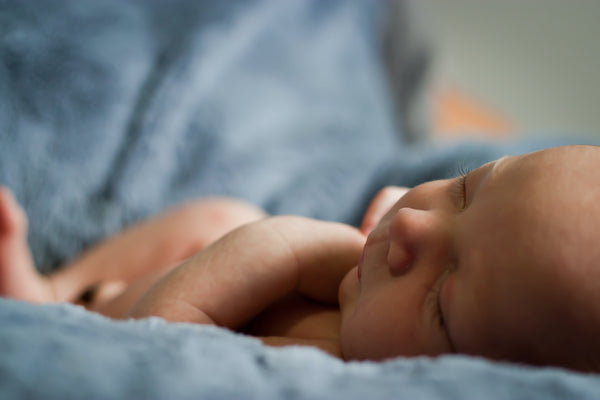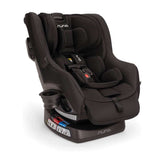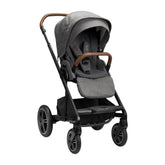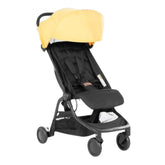6 Life-Saving Ways to Prevent SIDS Every Parent Should Know

Sudden infant death syndrome (SIDS) (also known as crib death) is the sudden, unexplained death during sleep of an infant less than a year old. According to the Centers for Disease Control (CDC), approximately 3,400 babies in the United States die suddenly and unexpectedly each year. While the exact cause is not known, scientists believe the answer may lie in a newborn’s rapidly developing cardiovascular and respiratory control.
In an effort to educate caregivers about ways to reduce the risk of SIDS and other sleep-related causes of infant death, the CDC collaborated with the Eunice Kennedy Shriver National Institute of Child Health and Human Development, the American Academy of Pediatrics, and other partners to develop the Safe to Sleep campaign (formerly known as the Back to Sleep campaign). Since the campaign’s launch in 1994, SIDS rates in the United States have decreased by almost 50%, both overall and within various racial/ethnic groups. However, SIDS remains the leading cause of death for U.S. infants one month to one year of age.
Is SIDS preventable? Even with decades of research, SIDS continues to be a heart-breaking challenge for doctors and caregivers around the world. Fortunately, there are actions you can take to help reduce your infant’s risk. Let’s take a look at how to reduce SIDS and the facts every parent should know.

Ways to Reduce SIDS
Sadly, not all cases of SIDS are preventable, but there are ways you can help your baby sleep more safely and reduce the risk.
1. Always place your baby to sleep on their back – every time, for every sleep.
Put your baby to sleep on their back – not on the stomach or side – every time you or any other caregiver puts them to sleep for the first year of life. This increases your baby’s access to fresh air and makes them less likely to overheat. Never assume that other caregivers will place your baby to sleep in the correct position — insist on it. Counsel babysitters and relatives not to use the stomach position to calm an upset baby.
Stomach sleep is strongly correlated with a higher risk of SIDS. Once your baby is able to roll over both ways without help (by around 6 months of age), the risk of SIDS decreases since the brain has matured and motor skills have improved. That said, experts recommend continuing to place babies to sleep on their backs until one year of age.
2. Empty the crib.
Pillows, blankets, crib bumpers, quilts, fluffy toys, and stuffed animals can all obstruct a baby’s breathing if their face presses against them. Baby’s crib should contain only a firm mattress and a fitted sheet. If you’re concerned your baby may get cold, try swaddling them or using a sleep sack.
3. Offer a pacifier.
How do pacifiers prevent SIDS? Studies demonstrate a significantly reduced risk of SIDS with pacifier use, particularly when placed for sleep. Experts hypothesize different reasons for this. Sucking on a pacifier brings a baby's tongue forward, opening the airway a bit more. It’s also possible that babies who use pacifiers sleep more lightly than babies who don’t use one. If your baby doesn’t want a pacifier, just try again another time – don’t force it. Nursing babies shouldn’t be offered a pacifier until breastfeeding has been well-established, around 3 to 4 weeks of age.
4. Don’t overheat your baby.
Keep the nursery at a comfortable temperature, around 68°F. Dress your baby in light, easy-to-remove layers. Don’t put them to sleep with a hat.
5. Share a room, not a bed.
Ideally, your baby should sleep in the same room as you, but by themselves in their own crib or bassinet for at least six months, and, if possible, up to a year. Adult beds are unsafe for babies since there is an increased risk they can become trapped and suffocated.
6. Nurse your baby, if possible.
Breastfeeding for at least six months lowers the risk of SIDS. Breastfed babies tend to be more easily roused from sleep than formula-fed babies, which may account for why breastfed babies are less likely to die from SIDS. Nursing parents are also less likely to smoke, and a baby's exposure to smoke—both in the womb and secondhand—increases the risk for SIDS.

What Causes SIDS: Risk Factors
Better understanding SIDS causes and risk factors is an important part of preventing it. Most babies who die from SIDS appear perfectly normal. There are several physical and environmental factors associated with SIDS that seem to make some infants more vulnerable.
- Sleeping on the stomach or side. It may be more challenging for babies placed in these positions to breathe than those placed on their backs.
- Sleeping on a soft surface. A fluffy blanket, a waterbed, or a soft cushioned mattress can obstruct an infant's airway.
- Bed-sharing. While room-sharing with a caregiver actually helps reduce the risk of SIDS, the risk goes up if an infant sleeps in the same bed as parents, siblings, or pets.
- Brain defects. The portion of the brain that regulates breathing and arousal from sleep hasn't developed enough to work properly in some babies
- Low birth weight and premature birth. These babies may have brains that haven't developed fully, thus giving them less control over automatic processes like breathing and heart rate.
- Respiratory infection. Many infants who’ve died of SIDS had recently experienced a cold that affected their breathing.
- Overheating. Being overly warm during sleep can increase an infant's risk of SIDS.
- Sex. Boys are slightly more likely to die of SIDS.
- Age. Babies are most susceptible between 2 and 4 months of age.
- Race. For reasons that aren't fully understood, non-white infants are more likely to develop SIDS.
- Family history. Babies who've had a relative die of SIDS are at higher risk.
- Secondhand smoke. Infants exposed to cigarette smoke have a higher risk of SIDS.
There are also several maternal risk factors that make a baby more vulnerable to SIDS, particularly if the mother smokes cigarettes, uses alcohol or drugs, receives inadequate prenatal care, or is younger than 20.
The Bottom Line on How to Prevent SIDS
Preventing SIDS is a priority of every parent and medical professional. Although the specific causes of SIDS are still unknown, researchers have discovered ways to reduce the risk. Parents and caregivers can learn more about these and other recommendations at Ways to Reduce Baby’s Risk from Safe to Sleep® and How to Keep Your Sleeping Baby Safe: AAP Policy Explained from AAP’s Healthy Children website.









